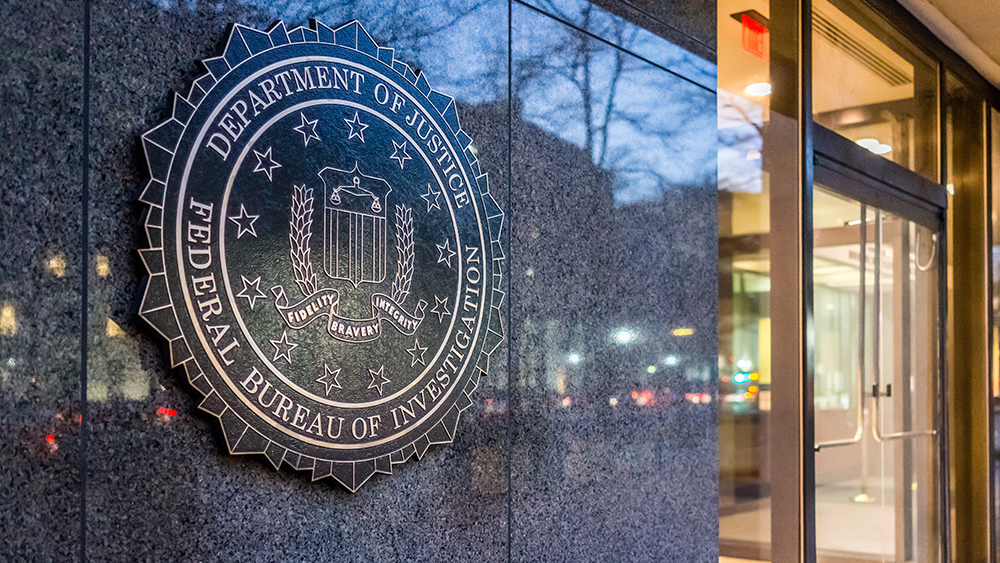WARNING: AI-powered DEEPFAKE VOICE SCAMS are now coming for your bank balance
09/06/2023 / By Laura Harris

Deepfake voice scams are now targeting your bank balance. Scammers have started to use artificial intelligence (AI) to generate voices in real time.
Clive Kabatznik, a Florida-based investor, recounted how he found himself at the center of a high-tech fraud attempt last spring. Kabatznik called twice on his local Bank of America representative. On his first call, he discussed his plan to transfer a large sum of money, then he called again to transfer the money elsewhere. Except that the second caller wasn’t him.
According to the banker, the second caller attempted to persuade her to transfer funds to a different account. However, the voice on the other end was repeating itself, kept on interrupting her, and using incomprehensible phrases. The banker ended the call and promptly reported the issue to their security team.
The banker then declined all calls and emails, authentic or not, coming from Kabatznik to ensure the safety of the account. It took approximately 10 days for them to reestablish contact and arrange a meeting at the office of the Bank of America.
To date, the data of wealthy customers are widely available on the dark web, so it is easier for scammers to execute their plans. Kabatznik, whose public appearances and speeches are readily accessible online, makes him a perfect target for this kind of deepfake scam. (Related: Free AI voice generation software successfully hacked into bank accounts using simulated voices.)
“There’s a lot of audio content out there,” explained Vijay Balasubramaniyan, the CEO and founder of Pindrop, a company that monitors audio traffic for major U.S. banks.
Deepfake voice scams are on the rise
Pindrop, a company that reviews automatic voice-verification systems for eight of the largest U.S. lenders, reported a surge in deepfake voice scams when fake voices created by AI programs started making an appearance in 2022. Nuance, another voice authentication vendor, also noted the first successful deepfake attack on a financial services client late last year.
In an article published by Gadget, a personal technology magazine, deep fake technology is supposed to be harmless, unless it lands in the wrong hands.
As technology advances, scamming techniques also evolve. Now, criminals can quickly turn their voice into the voice of their targets with the help of generative AI systems like Microsoft’s VALL-E. In some instances, these attacks can be executed with just a few seconds of sampled audio.
Dmitry Anikin, a senior data scientist at Kaspersky, said the technology required to produce high-quality deepfakes isn’t readily accessible for widespread use at the moment. However, he foresees a potential future scenario where this technology becomes more widely available, potentially leading to a significant increase in related fraudulent activities.
According to Anikin, scammers might attempt to generate convincing voices in real-time situations, such as impersonating a family member to deceive them into giving away money.
“Such a scenario is not realistic for now because creating high-quality deepfakes involves a lot of limited resources. However, to make low-quality audio fake, fewer resources are required,” Anikin said.
Visit FutureTech.news for more news related to artificial intelligence-powered platforms.
Watch the video below that talks about how ElevenLabs AI system cloned Health Ranger Mike Adam’s voice.
This video is from the Health Ranger Report channel on Brighteon.com.
More related stories:
AI-powered bot successfully requested refund from Wells Fargo using FAKE voice.
AI likely to WIPE OUT humanity, Oxford and Google researchers warn.
Sources include:
Submit a correction >>
Tagged Under:
AI, artifical intelligence, bank account, banks, computing, conspiracy, corruption, cyber war, Dangerous, deception, faked, future science, future tech, Glitch, hacking, information technology, insanity, inventions, money supply, national security, privacy watch, risk, security breach
This article may contain statements that reflect the opinion of the author
RECENT NEWS & ARTICLES
COPYRIGHT © 2017 INSANITY NEWS





















